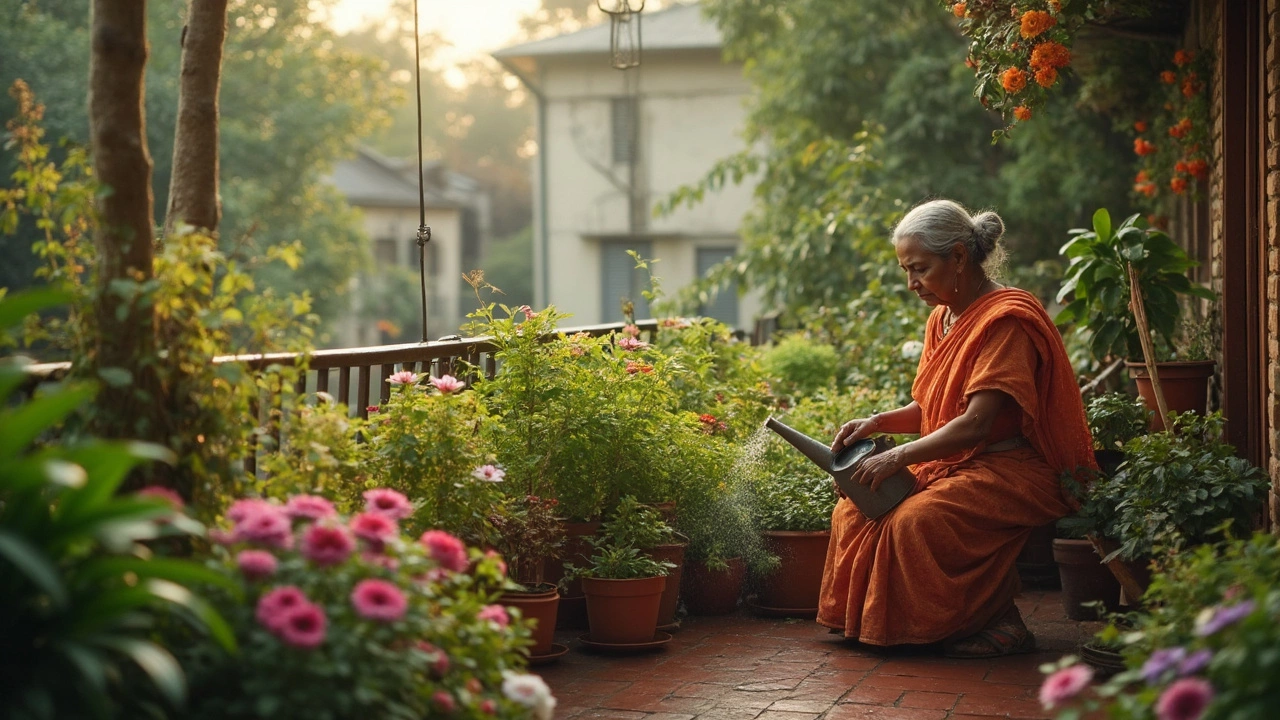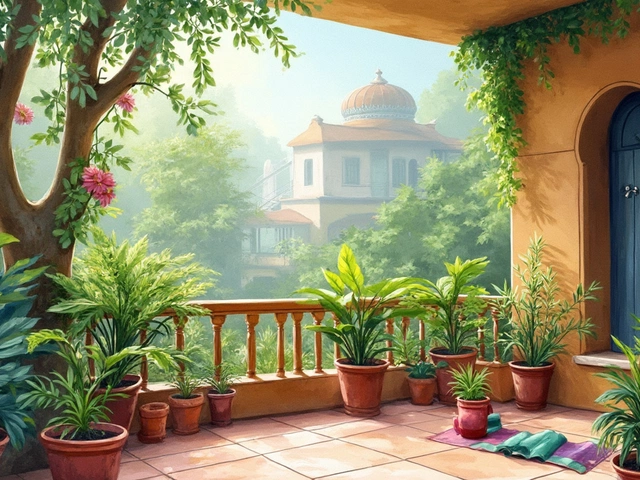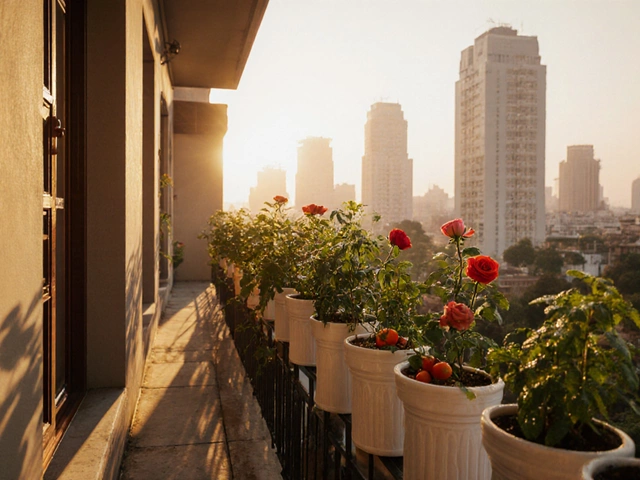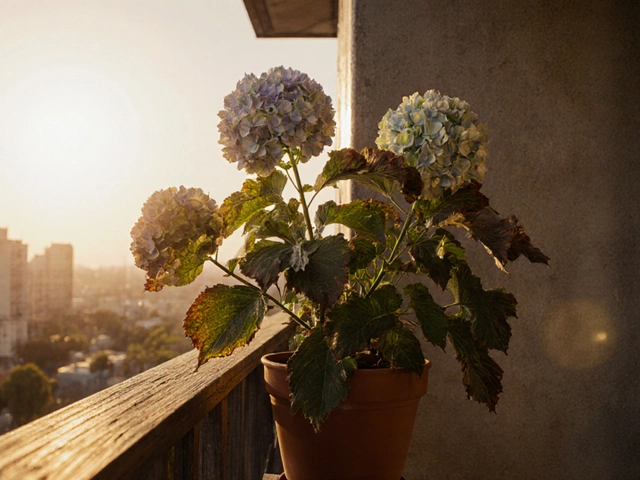So, you've caught the gardening bug but only have a balcony to work with? It's amazing what you can do with a small space, but let's talk about plants that will really test your green thumb. Speaking of challenges, meet the fiddle leaf fig—one of the trickiest plants to nurture, especially in a limited environment like a balcony.
Why is this plant such a tough nut to crack? Well, it's pretty finicky about light, humidity, and even its potting mix. Your everyday conditions can make it pout or drop leaves without any warning. If growing this plant sounds like a nightmare to you, it's not just you. But don’t worry, we’ve got some insights that might change your mind.
First thing's first—light. Fiddle leaf figs adore bright, filtered sunlight. Direct sunlight is like kryptonite, though, so if your balcony faces harsh rays, consider some kind of shading. Position is everything, and these plants are a bit like drama queens when it comes to lighting. But don’t let that scare you off!
- Introduction to Challenging Balcony Plants
- Identifying the Toughest Plant
- Special Conditions Required
- Tips for Determined Gardeners
- Turning Challenges into Success Stories
Introduction to Challenging Balcony Plants
Diving into the world of balcony gardening is like opening a door to endless possibilities. Yet, some plants bring along their own set of hurdles, much like trying to understand that one friend who’s always mysterious. If you're keen to elevate your gardening game, tackling a few tough plants could be an exciting challenge.
One might think that the biggest issue in a confined space like a balcony is the lack of space. However, factors like light exposure, temperature changes, and humidity levels play a significant role in determining which plants will thrive. Take the beloved fiddle leaf fig, for example. It's popular in online interior decor pins but known to fuss more than a pampered pet when moved to a less than ideal setting.
Why the fuss, you ask? It boils down to specifics:
- Light: Most tricky balcony plants, including the fiddle leaf fig, demand bright but indirect sunlight.
- Humidity: With typical low humidity in city apartments, maintaining the right moisture level can be quite the task.
- Potting Mix: Having the ideal soil is crucial. If your plant looks sulky, it might be time to reconsider its soil.
If you’re ready for some numbers, consider that a study from the Plant Physiology Institute noted that indoor plants exposed to direct sunlight for more than three hours a day showed stress signs in over 60% of cases. That could easily be your balcony during the bright afternoon sun.
It's these hurdles that make balcony gardening an art, giving you a sense of success once you've mastered it. Stay with us as we dig deeper into the specifics of these intriguing plants and offer tips to transform potential failures into flourishing friends.
Identifying the Toughest Plant
You might think growing a plant on a balcony is a breeze. But when it comes to growing a fiddle leaf fig in such a space, you’re in for a real adventure. This plant has earned its reputation as one of the toughest to cultivate, especially for those short on room.
The fiddle leaf fig is picky. It comes from West Africa’s rainforests, so it hasn’t adapted to anything less than humid climates with consistent warmth. On your balcony, creating such an environment can be as frustrating as it sounds. Temperature swings, cold drafts, and dry air can turn your lovely plant into a grumpy dud.
Why So Challenging?
The light is just the start of it. A fiddle leaf fig doesn’t just want light—it demands bright, filtered sunlight. Position it poorly and you’ll soon be scratching your head over lifeless leaves. And it’s not just what’s happening above the ground that matters. The soil has to drain well but retain enough moisture. Too dry, and it's game over. Too wet, and you’ll face root rot.
Other Culprits
Ever heard of plant tantrums? Honestly, fiddle leaf figs throw as many as a toddler. Move them from their spot or mess with their watering schedule, and they won't hide their displeasure. Yellowing leaves, leaf drop, or stunted growth can leave you baffled and wondering what went wrong.
In summary, while it’s a fascinating plant to showcase, you need to meet its fussy requirements. But if you’re up for the challenge, the reward of having a thriving fiddle leaf fig on your balcony is well worth the effort.
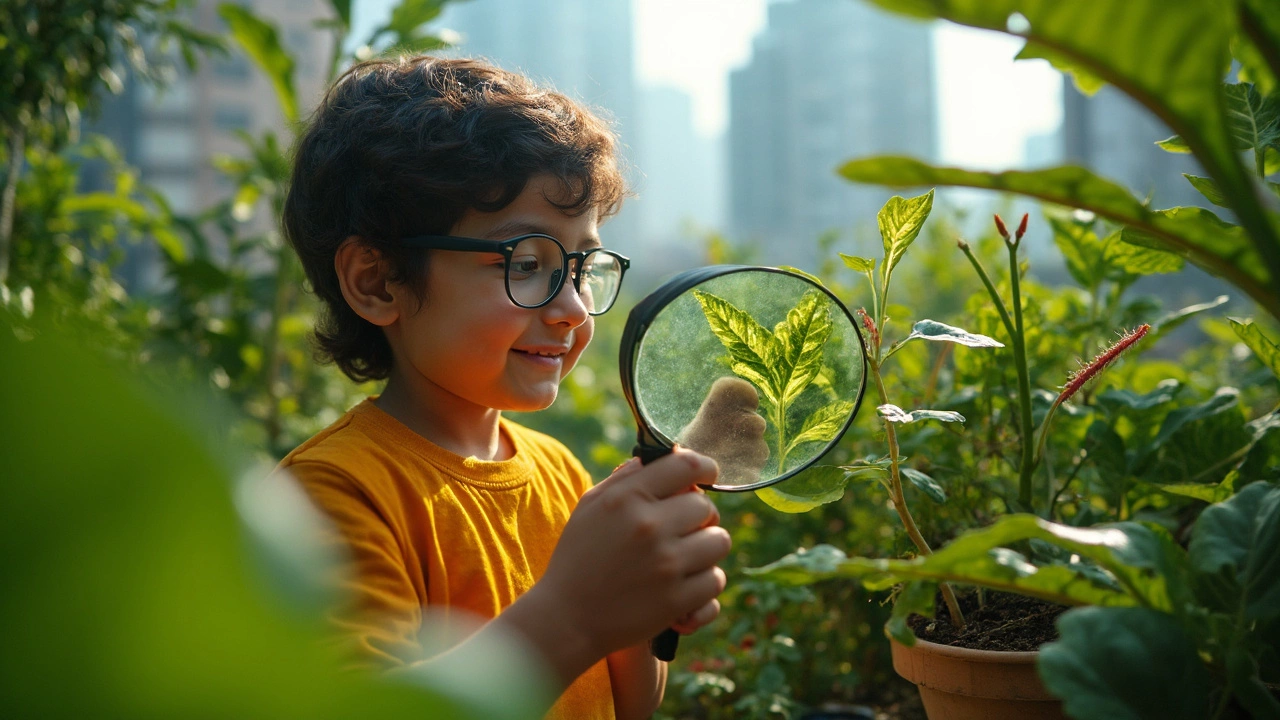
Special Conditions Required
Caring for a fiddle leaf fig on your balcony is like signing up for a crash course in plant pampering. A few special conditions are essential, so let's break it down.
Light Needs
Fiddle leaf figs aren't just picky; they're downright selective about their light. They thrive in bright, filtered light, but direct sunlight can scorch those giant leaves. If your balcony gets good afternoon sunlight, try a sheer curtain or shade cloth to soften the light. Your balcony could be a perfect spot as long as the light isn’t too harsh.
"The fiddle leaf fig demands excellent light but not direct sun," says plant expert Tessa Monte from Urban Greenery Magazine. "It's like having a sun-loving but shade-craving plant — a true balancing act."
Humidity Levels
If you've got a dry environment, you're in for a challenge. These figs crave humidity levels of around 40 to 60%. During dry spells, misting the plant or even setting up a simple pebble tray can work wonders. Just don't let the roots sit in water. Investing in a small humidifier could help keep your balcony garden just right.
Watering and Soil
Watering is another area where figures can trip people up. These plants like a drink but don't want their roots drowning. Check the topsoil; it should feel dry before you water again. Their soil must be light and well-draining — think of a mix of potting soil, peat, and perlite.
| Condition | Preference |
|---|---|
| Light | Bright, filtered |
| Humidity | 40% - 60% |
| Watering | Dry topsoil before watering |
Getting these things right is key! These plants are possible to grow on a balcony as long as you tailor the environment to their picky preferences. Do that, and you might just be the proud owner of a healthy, thriving fiddle leaf fig.
Tips for Determined Gardeners
If you're up for the challenge of nurturing that elusive fiddle leaf fig on your balcony garden, you're going to need a game plan. It might test your patience, but with the right approach, you can turn your thumb as green as ever!
1. Proper Placement is Key
Place your fiddle leaf fig where it can bask in plenty of bright but indirect sunlight. If it’s too bright, those leaves might get scorched, and too dim a setting will leave it looking sad and droopy. Find a spot on your balcony that's the Goldilocks zone—not too hot, not too cold.
2. Humidity Matters
This plant originates from a lot more humid places, so when you set it up on your balcony, aim to mimic those conditions. Investing in a small humidifier or misting your plant daily can help. If your climate is especially dry, it’s a must.
3. Water Wisely
The watering game requires finesse. Over-watering is the quickest way to a droopy plant. Usually, a drink once a week works, but trust your finger more than the calendar—it’s the best moisture gauge. Stick it about an inch into the soil to see if it’s dry.
4. Soil and Pot Play an Important Role
Ensure that you’re using well-draining potting soil when setting up the plant. It doesn't like sitting in water, so a pot with drainage holes is mandatory. If your plant is larger, consider a sturdy pot that can handle a bit of wind without toppling over.
5. Monitor Pests
Keep an eye out for those sneaky pests like spider mites. Regular inspections can keep infestations at bay. Catch them early with a soapy water spray or insecticidal soap—this can save a lot of grief later.
Remember, patience is your best friend here. This plant might play hard to get, but with consistency and care, you’ll soon have it thriving in your balcony garden. And hey, if it seems like a lot, just imagine the Instagram-worthy greens you'll have as a reward!

Turning Challenges into Success Stories
Struggling with your fiddle leaf fig? You're not alone! Plenty of balcony gardeners have faced those same hurdles but managed to turn things around. It's all about patience and adjusting your approach when things aren’t going as planned.
Understanding the Environment
First, analyze your balcony garden's unique environment. Does it get a lot of wind? Is there too much shade? Each element can affect how your plant grows. Moving the pot a few feet can sometimes make a world of difference. Consider investing in a moveable plant stand so you can easily adjust to seasonal changes.
Adapting Watering Techniques
Overwatering is a common mistake, but the opposite is also risky. Monitor the soil moisture regularly. Stick a finger about an inch into the soil; if it's dry, it's time to water. Try to water deeply but less frequently to encourage deep root growth. Make sure your pot has excellent drainage to avoid the dreaded root rot.
Sharing Tips and Tricks
Join a gardening community online. Sharing your challenges and successes with fellow enthusiasts can provide new strategies or confirm that you're on the right path. Blogs, forums, and local gardening clubs are full of experienced growers willing to help.
Boosting Plant Happiness
Consider occasional natural fertilizers to give your plant a nutrient boost. Just don’t overdo it; too much can be harmful. Look for signs—yellowing leaves might mean it’s getting too much, while stunted growth could mean it’s not enough.
Tracking Progress
Keep a simple journal to note changes. Track when you water, adjust positions, or fertilize. Over time, you’ll see patterns that can guide how you care for your challenging plant.
If you’re ever disheartened, remember that every bit of care is a step toward turning those gardening challenges into success stories. Patience, observation, and adjustment are key. Most importantly, have fun with it!
